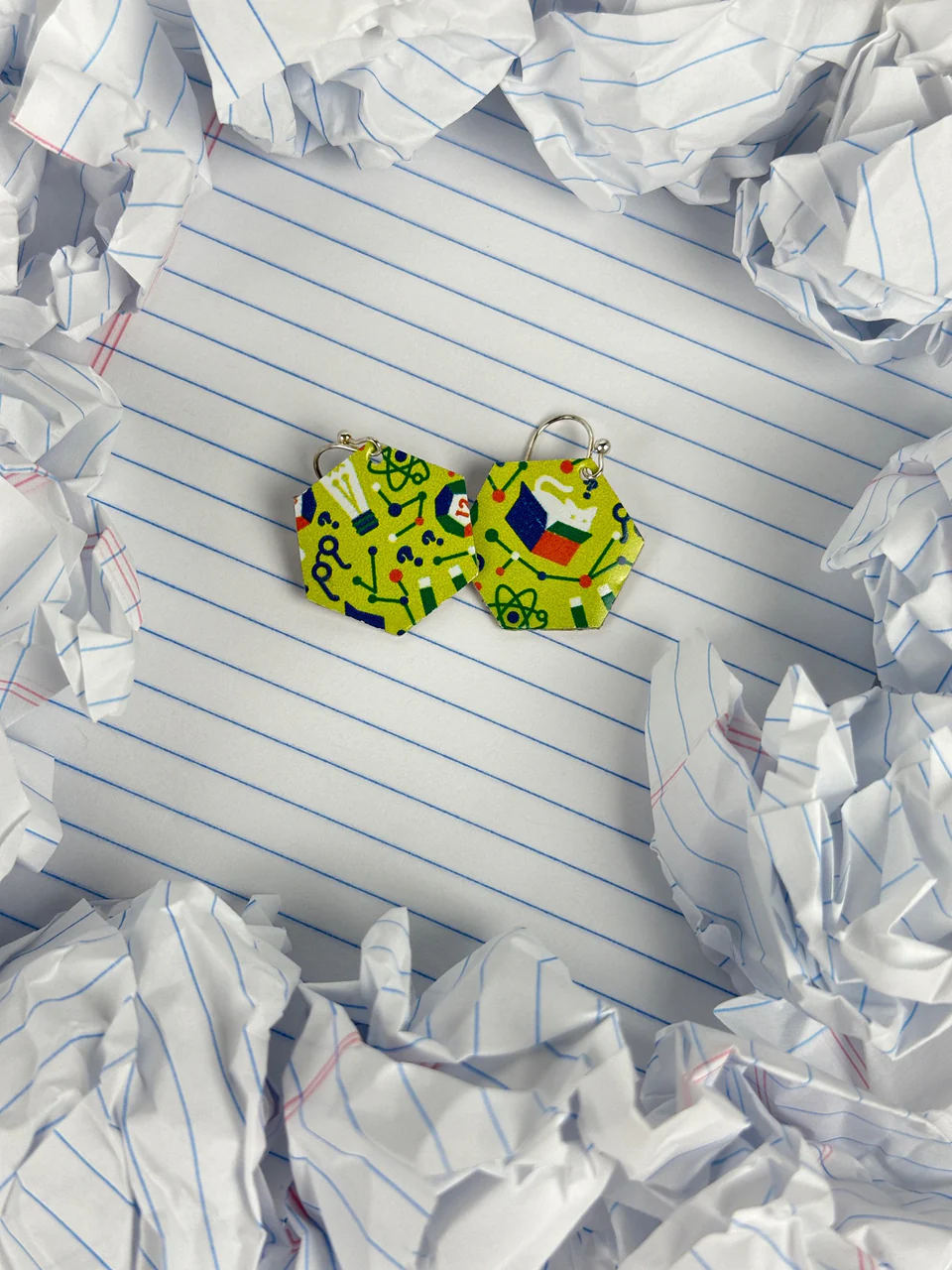

Today we’d like to introduce you to Jennifer McNichols.
Hi Jennifer, we’re thrilled to have a chance to learn your story today. So, before we get into specifics, maybe you can briefly walk us through how you got to where you are today?
Back in 2020, I saw a rise in artisan earrings made from vintage tins, and loved the marriage of craftsmanship and the repurposing of found materials. I had also noticed that the use of high-quality, creative graphics was increasing in the Austin craft beer scene — to this day, there’s still no other scene quite like it — and wondered if there was a way to repurpose aluminum cans along the same lines, to create jewelry with more contemporary and dynamic graphics at a more affordable price point that could then be produced in larger batches.
Working with my partner, Jeremiah, I began experimenting with ways to elevate an existing craft — the cutting out of pieces of mass-market aluminum cans (think Coors, Budweiser, and Coke) to create “beerings” — in a way that would be more durable, more fashion-forward, and make use of these intricate graphics I was seeing on craft beer cans, both those from Austin and those distributed here. We began selling our first designs of these earrings as Austin began reopening for business after the COVID shutdowns, and were encouraged by the positive feedback we received. As sales increased and we learned how to make our earrings more efficiently, we realized that what we were really doing was creating an alternative to the cheap and environmentally damaging imports widely known as “fast fashion”: Inexpensive, lightweight, and on-trend jewelry that is upcycled and sustainable.
Over the next few years, we have refined and added to our design and production process to develop our earrings, selling them at handmade artisan pop-up markets around the city and later traveling to larger handmade markets elsewhere. We started offering them wholesale to stores (Wheatsville Co-Op and Waterloo Records carry us, among others) and breweries (Austin Beerworks, Saint Arnold). Today, we’re continuing to seek new retail outlets for our jewelry, and maintain a strong presence at local artisan markets, where we love interacting with customers and sharing the purpose behind what we do. During that same time, I began experimenting with sourcing and using remnant fabrics that would otherwise go to the landfill to make fashion accessories and clothing.
Alright, so let’s dig a little deeper into the story – has it been an easy path overall and if not, what were the challenges you’ve had to overcome?
In designing a new kind of earring, we had early design challenges that took a while to solve. Earrings made from a single layer of aluminum were sometimes too lightweight and even a bit fragile, and it can be surprising in hindsight to see how long it can take to find the right solution to a product design problem. As we’ve solved those problems, it can be equally challenging to find that you’re inspiring others to compete with what you’re offering, who are able to leverage what you’ve learned without needing to invest as much time and effort. These are pretty common problems for companies entering a new space, and we’ve worked to remain competitive by keeping our costs, and our retail pricing, as low as possible. This requires a lot of discipline and efficiency in how we work, and a data-driven sense of what consumers like so that we can make products in the right-sized batches. We also continue to experiment to ensure that we are bringing new ideas to the market that build on what we’ve already done.
Working on tight margins means that other avenues for growth — staffing, marketing, etc. — can also feel riskier than we’d like. We’re still largely a two-person operation, and we’d love to find major distribution partners to help us scale as a business.
Thanks – so what else should our readers know about your work and what you’re currently focused on?
My background is as an artist — I got a BFA in photography from the San Francisco Art Institute, specializing in hand-printed, analog color work. I’ve always had an eye for composition and color, and always appreciated the production routines and precision required to work in the darkroom. I think these skills and interests contribute to the way I do what I do now in excising compositional elements from the graphic designs on cans, and marrying fabrics in surprising but complementary ways. I’m happiest when my motivations are a blend of self-expression and a larger sense of purpose, and creative upcycling gives me that.
So maybe we end on discussing what matters most to you and why?
I’m passionate about showing people that creating something beautiful doesn’t have to involve compromising deeper values like the need to respond to climate change, and that there is beauty all around us that can be celebrated and preserved, even in things we think of as transitory or throwaway. I’ve always been inspired by fashion and pop culture, and want to help us find ways to make those impulses less destructive to people and our planet.
I’ve found that doing this often involves challenging the status quo in ways that can make some people uncomfortable. I had a dear friend in college who told me she thought I was “kind, but not very nice,” and I learned over years of trial and error that when it comes to making change, the cultural expectation of “politeness” for its own sake can be used to undermine needed change. Hence the brand “Not Nice”: We’re not making luxury goods to broadcast status, but affordable indulgences that don’t wreck the planet.
Pricing:
- Earrings: $15 to $20
- Bolo ties: $40
- Women’s shirts: $80
- Duffel bags: $150
Contact Info:
- Website: https://www.notnice.us
- Instagram: https://www.instagram.com/not_nice_creations





Image Credits
Model photos: @zorgimedia
Product photos: @not_nice_creations













